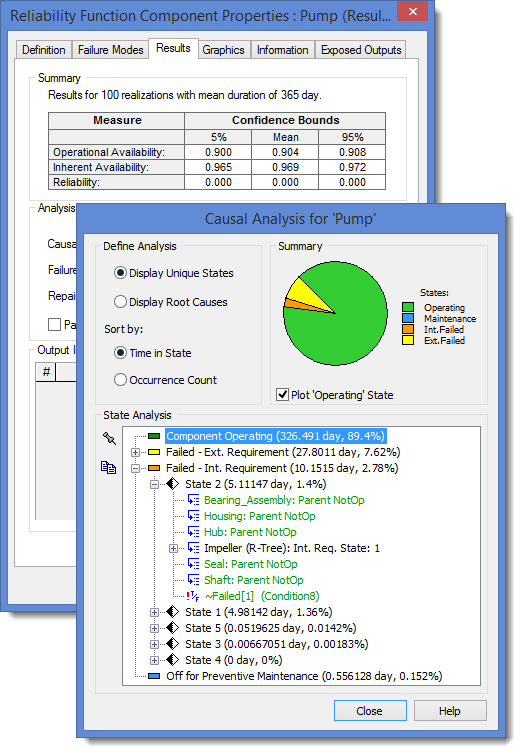Overview
Reliability Engineering and Risk Analysis for Complex Engineered Systems

Developed with partial funding from NASA, the GoldSim Reliability (RL) Module is an add-on extension to the GoldSim simulation software framework allowing you to probabilistically simulate and analyze the reliability and performance of complex engineered systems over time. GoldSim provides the ability to model the interdependence of components through requirements and fault trees, as well as the capability to define multiple independent failure modes for each component for detailed reliability analysis. This facilitates both reliability modeling and risk analysis within a variety of industries, including space and defense, manufacturing, mining, telecommunications, electronics and infrastructure.
The fundamental outputs produced by the Reliability Module consist of predicted reliability metrics (e.g., reliability and availability) for the overall system, and for individual components within that system. The Reliability Engineering Module can also be used to compute the probability of specific consequences (e.g., catastrophic failure of the system) to support risk analysis. GoldSim catalogs and analyzes failure scenarios, which allows for key sources of unreliability and risk to be identified.
Key Features
Because the Reliability Module is integrated into the GoldSim simulation software framework, you can develop a fully dynamic, probabilistic representation of the system being modeled. This allows you to easily represent the following in your risk and reliability models:
- The system can evolve into any feasible state and its properties can change suddenly or gradually as the simulation progresses.
- The system can be affected by random processes, which may be either internal (e.g., failure modes) or external.
- If some system properties are uncertain, the significance of those uncertainties can be determined.

Such an approach allows you to create a more detailed and accurate representation of your system than can be achieved with even the most sophisticated risk and reliability methodology. For example, with the GoldSim Reliability Module, you can:
- Model Components that have Multiple Failure Modes: GoldSim allows you to create multiple failure modes for components, each of which can either be defined by a distribution or occur when a specified condition arises. Failures which occur according to a distribution do not have to use time as the control variable. For example, a vehicle might use mileage to define failure, while an aircraft might use the number of cycles.
- Model Complex Interdependencies: In addition to providing a logic-tree mechanism to define relationships, GoldSim also allows you to model the more subtle effects of failure on other portions of the system. For example, you can easily model a situation where the failure of one component causes another component to wear more quickly.
- Model the External Environment: Reliability elements in GoldSim are fully compatible with all other GoldSim elements. This means that the environment in which the system operates can also be modeled, and can affect and interact with the system.
Versions
There are two versions of the Reliability (RL) Module: Reliability Professional and Reliability Learning Edition. Reliability Learning Edition is included automatically with GoldSim. Reliability Professional must be purchased separately.
Reliability Learning Edition provides all of the features and capabilities of Reliability Professional. The only difference between the two versions is that Reliability Learning Edition limits you to adding no more than ten reliability elements. Reliability Professional imposes no limits on the number of reliability elements that can be added.
